- Established 1982 -HOME: www.hiltonpond.org
THIS WEEK at HILTON POND Subscribe for free to our award-winning nature newsletter (Back to Preceding Week; on to Next Week) |
DUELING RODENT FORECASTS, The first half of February was an exciting time for natural history occurrences at Hilton Pond Center--particularly with regard to winter birds. But first, a word about weather. HARRY VS. PHIL On the morning of 2 February 2021 at Gobbler's Knob in Pennsylvania, a quack meteorologist named Punxsutawney Phil emerged--no, was forced from--his climate-controlled rodent burrow for an annual Groundhog Day weather prediction, prodded into activity by top-hatted handlers. (Those gentlemen, shown below with rolypoly Phil, were mostly unmasked while in close proximity during a nationwide pandemic AND they somehow had a formal scroll ready with Phil's "phorecast.")
All text, maps, charts & photos © Hilton Pond Center Despite a driving snowstorm, the phat and phurry Pennsylvania charlatan reportedly "saw his shadow" and predicted "six more weeks" of winter. It's not that we don't believe or agree with Woodchuck Phil's prediction, but his methods are highly suspect--especially since powerful TV lights outside his tunnel made it impossible for him NOT to see his shadow. Our preference, as always, is to turn to a far more reputable and reliable seasonal prognosticator in the form of Hilton Pond Harry, the White-footed Mouse, whose by-the-sun forecast has never been wrong.
All text, maps, charts & photos © Hilton Pond Center Sleepy-eyed, long-whiskered Harry (above) exited his natural abode for sunrise on the 2nd at Hilton Pond Center and really DID see his shadow--to be expected since a gorgeous orb was peeking through in the eastern sky (below). This diminutive but wise native rodent signaled the unavoidable: There will indeed be a “late” spring in 2021. (Is it coincidental that Harry made his forecast at 7:23 a.m., while sunrise at Punxsutawney wasn't until a full two minutes later AND that Marmot Phil then offered the very same prediction? We don't think so.)
All text, maps, charts & photos © Hilton Pond Center Yes, we’re afraid that for those of you who have cabin fever, Hilton Pond Harry’s unpleasant prognostication comes as sad news, but it is what it is. Harry says it’s much too early to break out shorts and tank tops (flip-flops are fine for some) and that you should keep handy your mittens—Bernie or otherwise—for another month and a half of cold weather. Bundle up, friends, and always rely upon Hilton Pond Harry.
All text, maps, charts & photos © Hilton Pond Center NOTE: Harry did remove his facial covering that morning for a brief moment so folks would know it was really him, but he remained socially distanced from the photographer for his forecast. All-knowing Harry encourages everyone to “Wear The Mask” in the hope we together will get through the pandemic AND six more weeks of winter. (Svelte Harry also advises Whistlepig Phil slim down a bit through better diet and a vigorous Groundhog exercise regimen. And quit sleeping so much!) All text, maps, charts & photos © Hilton Pond Center A HUNGRY HAWK It was a busy nature day on 3 February 2021 at Hilton Pond Center, the highlight being a species we seldom capture for banding. The bird? An immature female Sharp-shinned Hawk.
All text, maps, charts & photos © Hilton Pond Center This small raptor had been harassing even smaller birds at our feeders and likely catching some for snacks. As accipiters, that's what sharpies do. This particular individual had gotten progressively bolder--maybe hungrier?--such that when we went outside she would simply fly to a nearby perch and stare back at us with big yellow eyes (above)--one sign of an immature sharpie. (Irises turn red in adults.) On the afternoon of the 3rd the hawk was hanging around the feeders again, so we decided to place a small bal-chatri (noose) trap on top of another tunnel trap we use to capture ground-feeding songbirds and an occasional Mourning Dove. Eventually, a Pine Siskin found its way into the ground trap--at which point the keen-eyed hawk swooped down and landed directly on the OTHER trap, snaring one long, skinny toe in a monofilament noose. We immediately approached the trap and were surprised the sharpie made little effort to escape.
All text, maps, charts & photos © Hilton Pond Center We carefully un-snared the hawk, took our requisite photos, banded and measured her wing and tail, and sent her on her way--hopeful the whole experience will discourage her from further dining at the Center's main feeding station. (A wing chord measure of 202mm told us her gender; female sharpies are up to a third larger than males.) We should also mention the siskin was unharmed by the episode, so we banded it, too, and released it.
All text, maps, charts & photos © Hilton Pond Center This was only the 41st Sharp-shinned Hawk we've banded since 1982 at the Center--all in winter for a species that breeds sparingly in the North Carolina mountains and much more commonly as far north as Alaska. (Those are our recent capture's right foot and talons in the photo above.) Interestingly, 32 of our local captures have been males--one of which was banded at Hilton Pond in October 1994 and found dead in September 1999 in Bridgeport, West Virginia at the age of six years. An immature female sharpie we banded here in January 1992 was recaptured and released as a third-year bird in April 1993 at far-off Port Huron, Michigan--a straight-line distance of 570 miles. All text, maps, charts & photos © Hilton Pond Center DISAPPEARING SISKINS Many things in nature appear inexplicable, but some seem more confusing than others. That was the case on 8 February 2021 when we captured exactly ZERO Pine Siskins at Hilton Pond--even though we had all the same traps deployed as on each day previous. (See photo below of several siskins in one of our hanging traps. They all entered within a 20-second span.)
All text, maps, charts & photos © Hilton Pond Center So why is this particular day's Pine Siskin absence so mysterious, you ask? Well, here are the Center's Siskin banding totals for the first week in February:
It seems almost impossible that after 348 Pine Siskins were banded over a seven-day period that virtually all of them and their buddies would or could simultaneously disappear on 8 February. We saw two at a feeder shortly after dawn on the 8th and later recaptured one we banded a few days previously, but by mid-morning that day no siskins were to be seen. It was like throwing an on/off switch--here yesterday and all those days prior, but gone the next. All text, maps, charts & photos © Hilton Pond Center (Click on image above for a larger version in a new browser window) Indeed, on 7 February the ground outside the old farmhouse was littered with dozens of siskins, all picking through seed scraps spilled from overhead feeders. (The rainy day image above includes a small sampling of our typical winter finch flock. In the photo are ~50 Pine Siskins, two adult male Purple Finches, ~five brown Purple Finches of unknown age or sex, ~six American Goldfinches, and a bonus White-throated Sparrow. Bands are visible on several of these birds.)
All text, maps, charts & photos © Hilton Pond Center But what triggered the siskins' sudden departure on the 8th? There was just as much food available in feeders and on the ground as on preceding days, but no siskins were around to partake of the cornucopia. (When spooked on 1-7 February the siskins would swoop off and perch by the dozens in nearby trees, as above, before returning to feed, but those trees were empty of birds on the 8th.) That day's weather was milder than lately under mostly clear skies and there was no rain in the immediate forecast, so it's doubtful a new weather front was a stimulus for bird movement. Were these little birds prodded to move further south by unexpected snowfall that fell two days before on 6 February not too far to the west? Were there several predators in the area scaring them away? Or did some homeowner nearby open a new feeding station with a seed bounty that drew in "our" birds? What was going on? Pine Siskins are an irruptive, nomadic species, but we're still stunned by an "overnight" instant change in their local population. From what we've heard, this siskin departure behavior has happened at other folks' feeding stations, but we can't explain it. Got any ideas? Let us know at INFO.
All text, maps, charts & photos © Hilton Pond Center POSTSCRIPT: In an even more bewildering turn of events, Pine Siskins returned en masse on 9 February after their one-day absence, and we banded 42 of them. (The photo above shows a come-and-go assemblage all four winter finches, providing a nice comparison.) Then it was 16 siskin bandings on the 10th, 25 on the 11th, a record-breaking 97 on the 12th, just three on the 13th (0.82" of rain!), 54 on the 14th, and 33 on the 15th to round out the first half of February. All text, maps, charts & photos © Hilton Pond Center PROOF OF AN UNPRECEDENTED FINCH IRRUPTION So what proof do we have at Hilton Pond Center we are actually witnessing an unprecedented irruption of "northern finches" in the winter of 2020-21? Well, in the just-completed first half of February we banded exactly 600 Pine Siskins, which anyone should agree is a heckuva lot. Oh, and we also caught 101 new American Goldfinches . . . and 89 Purple Finches . . . and, as ultimate evidence, in that 15-day period we dispensed 80 POUNDS of black oil sunflower seed, 25 pounds of mixed seed, and five pounds of thistle--none of which we would have thought possible! Now we're running out of Size O bands (siskins and goldfinches) AND the year's seed budget is already in shambles! All text, maps, charts & photos © Hilton Pond Center (Click on chart above for a larger version in a new browser window) Those particular numbers are just part of this winter's story, for in January we banded 83 siskins, 82 Purple Finches, and nine goldfinches. But the current irruption actually began at the Center last fall on 17 October with the first--much earlier than usual--Pine Siskins. Thus, if we look at the 2020-21 Winter Season through 15 February (see chart above), we've banded a grand total of 1,011 Pine Siskins--far surpassing our previous seasonal record of 780. Add to that 213 Purple Finches, 138 American Goldfinches, and 88 House Finches captured from October through 15 February and we get a tally of 1,450 bandings for the four "winter finches." Again, such overall numbers are unprecedented in our 40 years of banding at Hilton Pond Center, so is it any wonder we're using lots of sunflower seeds?
All text, maps, charts & photos © Hilton Pond Center NOTE: Although we include House Finches (HOFI, adult male, above) in our tally of "winter finches," it may be most or all HOFI now at Hilton Pond are actually local year-round residents. This is far different from the 1980s when nearly all our House Finches were migrants from further north. The species has expanded its eastern U.S. range and now breeds in every contiguous state. However, for the Center's American Goldfinches, midsummer captures reveal some are local breeders while the rest apparently are more-or-less "irruptive migrants," typically coming down with Pine Siskins, Purple Finches, and other species from northerly breeding grounds in years when wild seed crops are especially scarce. All text, maps, charts & photos © Hilton Pond Center AN ELDERLY FINCH All this year's Pine Siskin action has been quite interesting, but the really big news on 8 February was the trapping of the bird in the photo below. Can you identify the species? How about its gender. Or its age?
All text, maps, charts & photos © Hilton Pond Center If you said Purple Finch, you are right. Notice the heavy bill with a culmen (top ridge) that is straight, the pale superciliary line (above the eye), the flank streaking, and the raspberry coloration. And since in Purple Finches only adult males are fully red--females and young males are mostly brown--you'd logically conclude this bird is a young, second-year male just beginning to get his red plumage. Alas, you'd apparently be wrong on both age and sex! This amazing individual (federal band #2661-03266) is actually an adult female we first captured at Hilton Pond Center 'way back on 13 January 2015. On that date she was all brown and white with a bit of gold wash to her face and had the pointed tail feathers of a young (second-year) bird; thus, she had to have fledged in 2014--meaning in 2021 she is in her EIGHTH year!
All text, maps, charts & photos © Hilton Pond Center We always urge folks NOT to say Purple Finches with pink wash are immature males, and this individual is evidence. A few old females acquire some of the red coloration typical of males and may even sport a colorful gold rump like the bird in our photo. By the way, we re-trapped this methuselan Purple Finch one other time--on 15 February 2017 when she was a "mere" four years old, with a gold wash to her feathers--when we just happened to take a photo of her (above). What an amazing example of longevity in a Purple Finch--to say nothing of site fidelity from this small winter visitor that breeds nowhere near Hilton Pond Center and, our captures show, has migrated back and forth at least three times. How exciting is that!?
All text, maps, charts & photos © Hilton Pond Center CAVEAT 1: We have banded and then recaptured several other "old" female Purple Finches with pink wash (fifth-year female, above, from March 2019), but this week's bird looks like she could have aberrant plumage--hence her few flank streaks and the very large, bright gold rump patch. That said, such unusual coloration might be a function of her advanced age. CAVEAT 2: We suppose there is a possibility this recent Purple Finch recapture is actually a male with abnormal plumage. The wing chord measurement was inconclusive, so the only practical ways to prove gender are to look internally for testes (which we're not inclined to do), or to recapture it on its unknown nesting grounds to see if there is a cloacal protuberance indicative of a breeding male (with such a recapture extremely unlikely to occur). Note that we simply don't have access to DNA analyses that could reveal the bird's sex. Therefore, for now we're going with this old PUFI's age/sex as "elderly female" and will be looking for her again next winter. All text, maps, charts & photos © Hilton Pond Center SUNSETS AT HILTON POND "Never trust a person too lazy to get up for sunrise We announced recently we would attempt to take a photo of the sunset every day in 2021 to document changes in weather and the seasons--and to show our aesthetic side. We then heard from numerous folks encouraging us to include some of these images in installments of "This Week at Hilton Pond," which we are happy to do.
All text, maps, charts & photos © Hilton Pond Center Sunset over Hilton Pond (above), 8 February 2021 PERSONAL NOTE And on a closing personal note, I'm overjoyed to point out that 'way back on Valentine's Day 1971 Mr. William John "Bill" Hilton Jr. (that's me!) and Miss Susan Dressler Ballard (aka The Goddess) were joined in matrimony in Greenville SC. Thus, this week on 14 February 2021 we celebrated our 50th "Valentersary"--a combination 50th Wedding Anniversary and 53rd Valentine's Day together.
All text, maps, charts & photos © Hilton Pond Center Miss Ballard (now Mrs. Hilton) has been enthusiastically supportive of my work and more than tolerant of my eccentricities for more than five decades--and in particular of my efforts since 1982 at Hilton Pond Center for Piedmont Natural History. Without her, nothing we have accomplished here and elsewhere would have have been possible. Inside and out she's the most beautiful "bird" I ever "caught," and in 1971 I did indeed "band" her--with gold on the ring finger of her left hand before she could ever get away. All text, maps, charts & photos © Hilton Pond Center Photoshop image post-processing uses DeNoise AI, Sharpen AI , and other Topaz Lab tools
Checks also can be sent to Hilton Pond Center at: All contributions are tax-deductible on your Don't forget to scroll down for Nature Notes & Photos, |
|---|
|
"This Week at Hilton Pond" is written and photographed by Dr. Bill Hilton Jr., executive director of Hilton Pond Center for Piedmont Natural History
|
|
|
Please refer "This Week at Hilton Pond" to others by clicking on this button: |
|

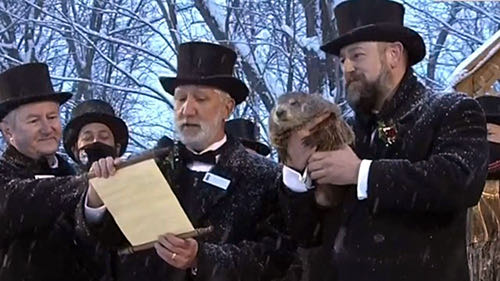
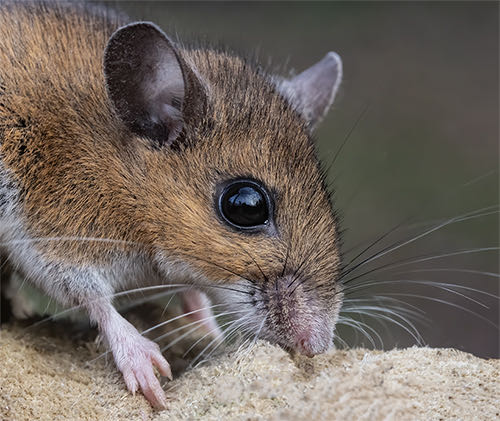
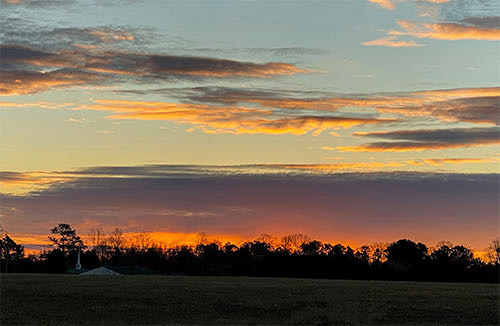
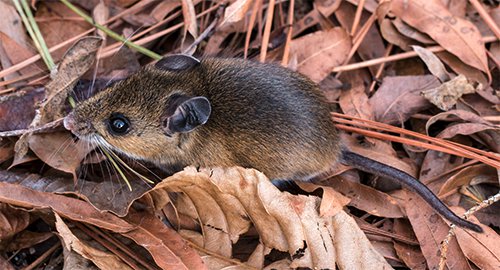
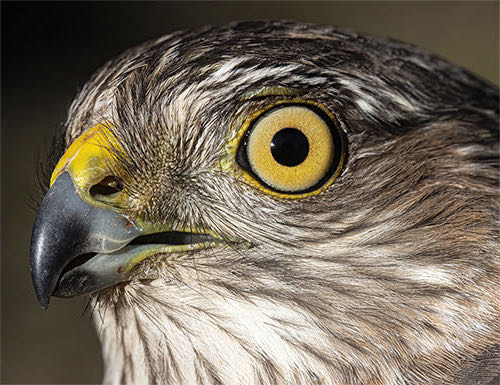
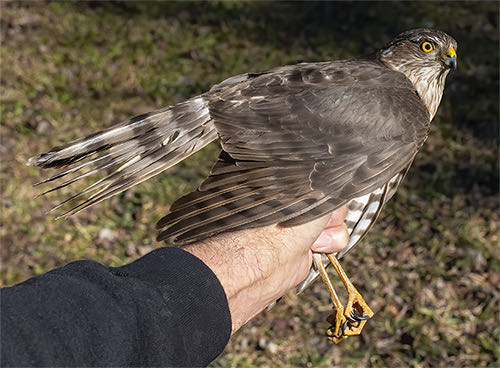
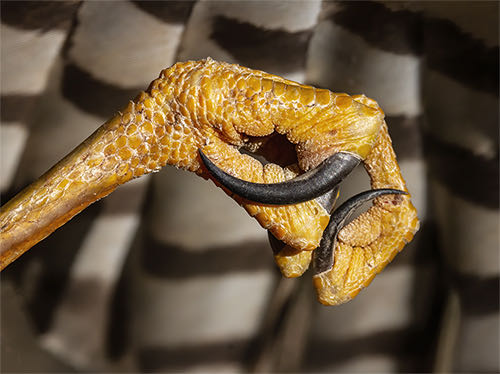

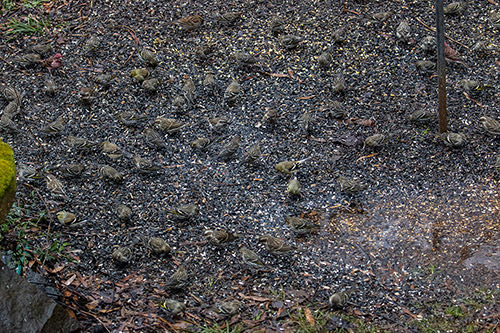
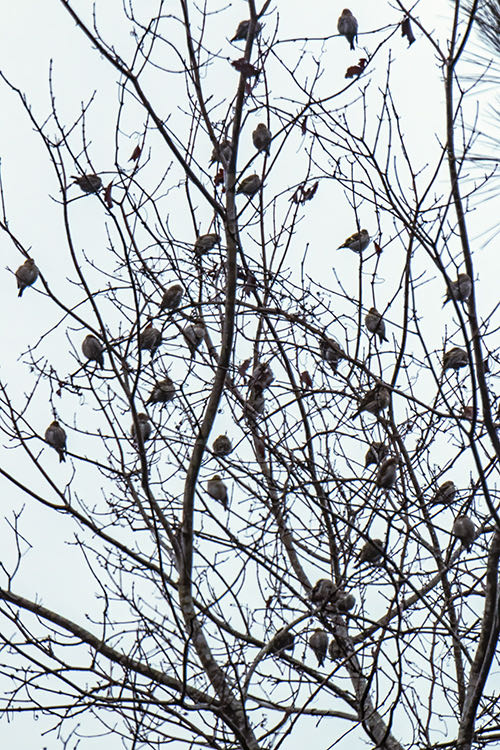

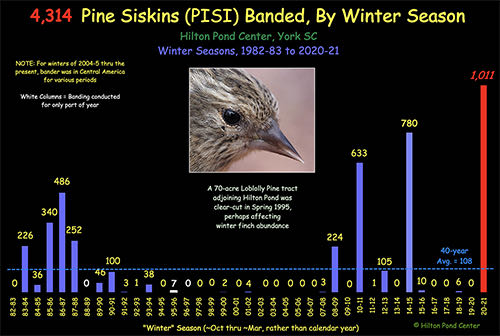
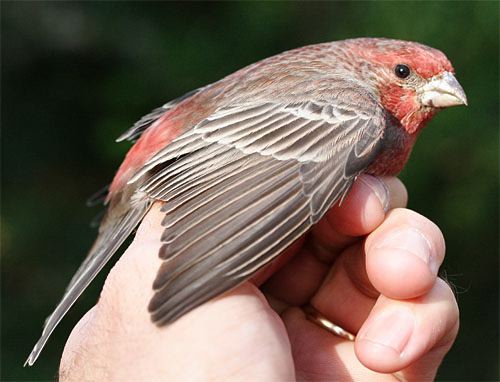
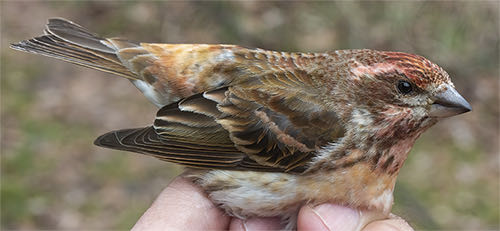
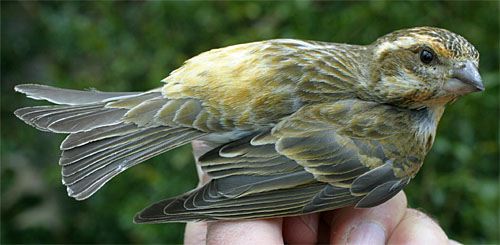
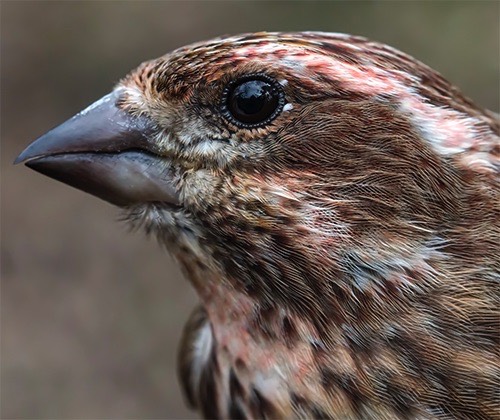
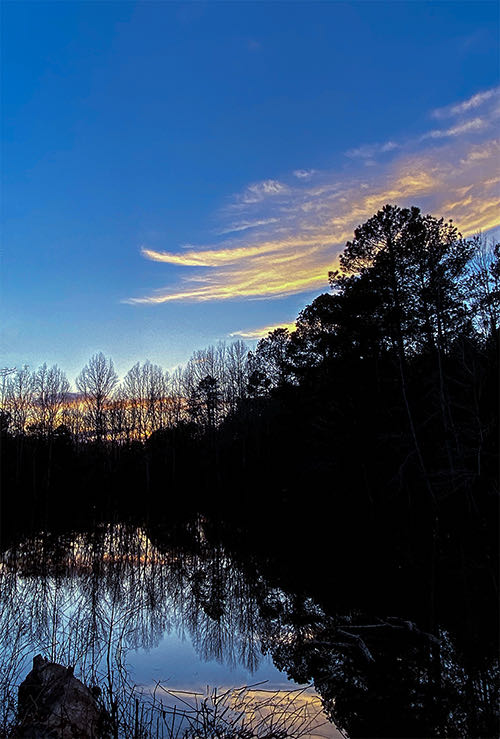











 Oct 15 to Mar 15:
Oct 15 to Mar 15: